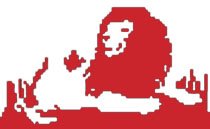Sri R Kannan PSI Sub Regional Secretary Faridabad India reported about Nepal earth quake... really it is shocking...
 The leadership of the five PSI affiliated unions in Nepal, Nepal Civil Services Employees’ Union (NCSEU), Union of Public Services in Nepal (UPSIN), Health Professionals’ Organisation of Nepal (HEPON), Nepal Customs and Airport Workers’ Union (NCAWU) and Nepal Film Workers’ Union (NFWU) joined forces to coordinate and unify their efforts. They have identified the worst affected districts as:
The leadership of the five PSI affiliated unions in Nepal, Nepal Civil Services Employees’ Union (NCSEU), Union of Public Services in Nepal (UPSIN), Health Professionals’ Organisation of Nepal (HEPON), Nepal Customs and Airport Workers’ Union (NCAWU) and Nepal Film Workers’ Union (NFWU) joined forces to coordinate and unify their efforts. They have identified the worst affected districts as:
 After a further hour’s drive, we reached Pokhairiya and I was shocked by the extent of the devastation the earthquake had caused. Seven wooden houses had been totally destroyed and the villagers had to stay in this makeshift tin shelter.
After a further hour’s drive, we reached Pokhairiya and I was shocked by the extent of the devastation the earthquake had caused. Seven wooden houses had been totally destroyed and the villagers had to stay in this makeshift tin shelter.

From Kathmandu, he moved on to Sindhupalchowk, close to the epicentre, and on to further small villages where PSI affiliates are on the front-line in the disaster response. Here’s Kannan’s account of his visit.
3rd May 2015
As the aircraft approached Kathmandu, the pilot made an announcement: “We may expect considerable delay on arrival; there is no parking bay available at Kathmandu Tribuvan Airport because of the number of relief aircraft landing.” In normal circumstances, such an announcement would annoy me, but this time I felt happy that the delay was due to the international community’s support for the people of Nepal. As I write this, more than 6000 human lives have been lost due to the earthquake that shattered Nepal on 25th April 2015.
On that day, PSI affiliates in Nepal immediately began rescue activities. The Nepal Civil Services Employees Union (NCSEU) called on all its members to assist with the rescue efforts while the Health Services Professionals Organisation of Nepal (HEPON) dealt with the urgent health needs of the people.
- Sindhupalchowk
- Gorkha
- Nuwarkot
- Dhanding
- Rasuwa
- Kavrepalchowk
- Kathmandu
- Bhatrapur
- Lalitpur
- Dolakha
NCSEU and HEPON, with the assistance of the district committees, were in charge of coordinating the rescue and relief measures.
I offered them the water purification tablets and facemasks donated by PSI affiliates in India, and which were a welcome addition to the relief efforts.
4th May 2015
I accompanied the NCSEU General Secretary and the NFWU President to Sindhupalchowk, a four-hour drive from Kathmandu. It was the worst affected district and relief materials were only just arriving. In the centre of Sindhupalchowk, we could see the landslide caused by the earthquake.
The devastation was apparent everywhere.
The District Health Hospital was badly damaged and a temporary Health hospital has been set up in a tent and is fully functioning since 2nd May.
I was impressed to see the excellent work that Nepal health employees are carrying out in such difficult conditions. We saw nursing sisters, paramedics, doctors, and other health professionals doing commendable work. Army personnel who were transporting the affected persons for their health needs informed me that 164 people had received medical assistance that day. The public health workers are showing governments, international financial institutions and multinational enterprises the success of public sector health care, which is even more important in emergencies and disasters.
We met the Assistant District Administration officer who is overseeing the relief and rescue measures. He expressed his appreciation to all the government officials and the union for coordinating the disaster management work through the army, police and revenue authorities. The district office building was damaged but officials often spend whole days and nights in the office and are permanently on call.
On our return to Kathmandu, although it was heart-breaking to see the ruins that had once been homes, I am now more aware of the crucial role played by the public workers: government employees, health workers or electricity workers, in response to the disaster.

No comments:
Post a Comment